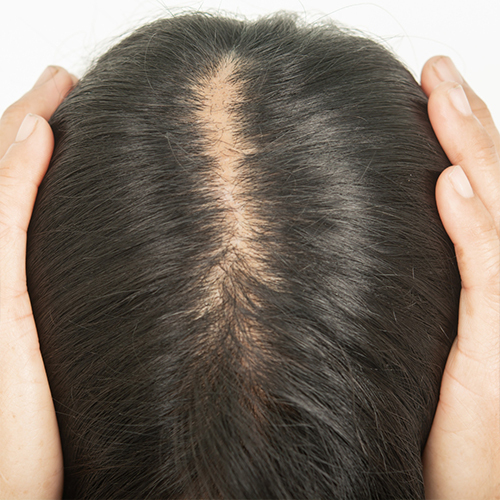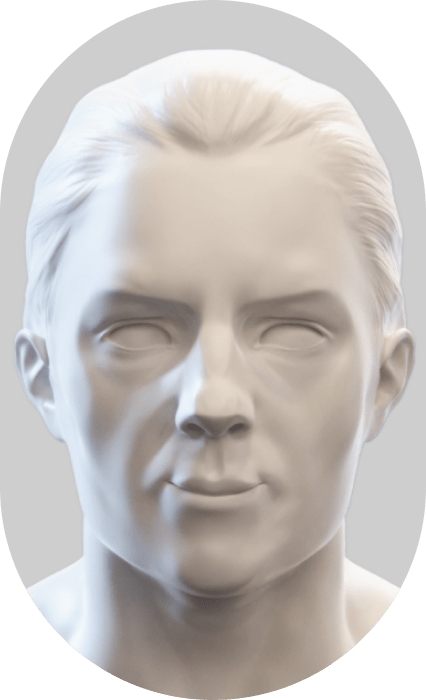Hypotrichosis
A rare genetic disorder, hypotrichosis normally starts in the womb, although it may present itself later in childhood. It’s characterized by a lack of hair growth or a poor quality of hair. Depending on the type of the condition, hypotrichosis may affect your whole body or just parts of your scalp. While there’s no cure for it, you can find effective treatment for its symptoms at the best hair loss clinic in Manhattan at Linkov Hair Surgery. Call Dr. Gary Linkov for answers to this genetic riddle and take steps to regain your hair.

What Is Hypotrichosis?
Hypotrichosis is a rare congenital condition that affects your normal hair growth. With hypotrichosis, you experience little to no hair growth. The poor hair growth symptoms may be regional or general. People suffering from hypotrichosis have no hair growth from birth, or they get sparse, coarse and dry hair.
This hair growth disorder affects eyebrows, the edge of your eyelids and other body areas where hair normally grows. Doctors attribute hypotrichosis to a genetic mutation during embryonic development. The lack of hair growth often causes feelings of distress and requires specialized treatment by the best hair restoration specialists.
If you need individualized hypotrichosis treatment, visit Dr. Gary Linkov and his team of hair restoration specialists at Linkov Hair Surgery in Manhattan. Dr. Linkov, a board certified surgeon and hair loss expert, uses advanced hair loss treatments for men and women with proven results.

What Are the Symptoms of Hypotrichosis?
The main symptom of hypotrichosis is the lack of hair growth from birth. Since it affects hair all over your body, not just on your head, it’s a relatively easy condition to recognize. But other symptoms exist that your hair restoration specialist can identify, such as:
- Short, dry and rough hair on your head
- Sparse body hair, including on your arms, legs and genitals
- Hair that’s maybe tightly curled
- Rare cases of skin problems, such as itching, redness or scalp erosion
- Hair that’s lighter in color than the rest
- Hyperkeratotic follicular papules or lesions and bumps in the areas of poor hair growth
- Easily damaged or broken hairs
- Bumps around the hair follicles, affecting normal hair growth
- Sparse, thin eyebrows
Hypotrichosis may progress to complete hair loss on your scalp, a condition known as alopecia. Some medical conditions may occur with hypotrichosis, such as cartilage-hair hypoplasia, Jeanselme and Rime hypotrichosis, Marie Unna hypotrichosis and Graham-Little syndrome. The symptoms help your doctor reach a diagnosis before hair treatment starts.
What Causes Hypotrichosis?
Hypotrichosis is a complex genetic disease, linked to various congenital problems. Some explanations for hypotrichosis include:
- One or more gene that isn’t working correctly
- A disease causing variants in specific genes, such as LSS and LIPH
- An autosomal dominant inheritance, in which only one copy of the causal gene has a disease-causing change
- An autosomal recessive inheritance in which both copies of the responsible gene have a pathogenic variant
Such genetic changes may lead to structurally abnormal or underdeveloped hair follicles. With damaged hair follicles, hair growth is drastically reduced so you experience sparse hair growth. During your initial consultation with a hair restoration specialist, you can expect a physical exam and a review of your medical history. If you have a child experiencing sparse hair growth, it’s recommended that you get an early diagnosis.
What Are the Different Types of Hypotrichosis?
Hypotrichosis manifests in different forms. In all cases, however, the symptoms cause distress for both the parent and the child. The three most common forms of hypotrichosis include:
Congenital aplasia or aplasia cutis congenita In this hair growth disorder, an embryo’s skin doesn’t form fully during development. At birth, your child has a wound or an ulcer on the scalp at the back, which may heal gradually, but normally requires surgery. The affected site has no hair follicles and your child is at a high risk of hemorrhage or infection without immediate surgery.
Triangular alopecia or alopecia triangularis This hair growth disorder develops from birth and affects the area above the temples. No hair follicles grow in the affected triangular patch, leading to a bald spot that may require surgery or hair transplant procedures, such as a follicular unit extraction, follicular unit transplantation or Neograft hair transplant.
Congenital atrichia or papular atrichia This is a unique hair loss pattern caused by a single gene defect. Children with the condition are born with a full head of hair, but lose all the hair in early childhood. The hair does not regrow.
An early diagnosis for hypotrichosis by Dr. Linkov and his team at the Manhattan-based hair restoration clinic makes all the difference. The hair loss doctors also treat other types of hair loss, such as:
Is Hypotrichosis Treatable?
Congenital hypotrichosis has no cure, but medical advances can help your hair restoration. Hair loss treatments boost your self-esteem and improve your self-image, among the many other benefits. The common steps to get treatment for hypotrichosis include:
- Visit Linkov Hair Surgery for a consultation with an expert
- Let the doctor assess your symptoms and review your medical history
- Take any necessary testing so the doctor can rule out other types of hair loss and reach a diagnosis
- Follow the treatment protocol as directed by your doctor
Your treatment is tailored to your diagnosis, but may include such remedies as: medications, hair restoration, hair cloning, platelet-rich plasma therapy or stem cell therapy. The cosmetic surgery team embraces revolutionary hair loss treatments for effective hair restoration.

What Results from Untreated Hypotrichosis?
From an early age, hair growth is a sign of good health. As a parent, you expect your child’s hair to grow normally. If you notice a lack of hair growth or poor hair quality, you may have reason to worry. Some problems associated with a lack of hair may include:
- Psychological trauma associated with the unusual appearance, especially as the child grows older
- High risk of sunburn due to an exposure to UV rays with no hair for protection
- Low self-esteem because of the unique hair growth pattern
- The risk of skin infections because of the absence of hair, which protects the skin from bacterial and fungal infections
- A poor body image, especially in girls who value hair for identity
- Poor temperature regulation, since without hair, you lose heat during winters and have to deal with heat retention during summer
- Disfiguration on the scalp, which may lead to problems in relationships
Dr. Gary Linkov is a board certified surgeon who works closely with you to diagnose your type of hypotrichosis and find the best treatment. The best hair loss doctors in NYC use a multi-pronged approach to hair loss treatment to treat a broad range of hair loss conditions. Contact the hair restoration surgeons at Linkov Hair Surgery today for an early diagnosis of hypotrichosis.
Linkov Hair Surgery
150 E 56th St, #1A
New York, NY 10022
(212) 970-9404

